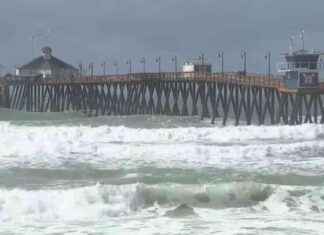I can accept failure, everyone fails at something. But I can’t accept not trying
Michael Jordan
—————————
Just over three weeks separate two scenes.
The first of them had been registered in Rome, in the press room of the Foro Italico. Lame and sore, and defeated by Denis Shapovalov, Rafael Nadal (36) said:
I don’t know how much longer I will bear this pain.
Was he trying to tell us something?
Presumably so, and he has kept us tennis chroniclers alert since those days.
The second scene was recorded this Sunday, at Roland Garros. Nadal appeared on the central court of the Bois de Boulogne, the Philippe Chatrier, and 15,000 pairs of eyes opened wide, excited, because there was his idol again, the tennis player with the 14 titles at Roland Garros, the one with the 22 Grand Slams.
(Roger Federer and Novak Djokovic have really been left behind, nailed at 20)
(…)
“All French people belong to Nadal,” Guillaume told me, the usher who, an hour before the final, was marking the seats in the press box with labels (the Spaniards occupied two rows, the Norwegians a third).
-And because? she asked Guillaume.
-When Nadal won his first Roland Garros here (2005), I was a child: I have lived with him all my life, I have seen him win almost always. How am I going to be any other tennis player?
And as if listening to Guillaume, the stage shouts:
-I love you, Rafael!
And savor the script: 2h18m later, Nadal has definitely eternalized himself.
And the chronicler ends up wondering: what is now going through the mind of Casper Ruud (23), the best earthling of the moment, after having seen himself as he has seen, mistreated by a legend who three weeks ago declared himself lame, badly injured and questioned ?
When will this story of the legend of Paris end?
When will Nadal leave something for the rest?
Well, everyone falls here, their contemporaries from the Big Three, and the overwhelmed members of the Next Gen, and the puppies like Alcaraz, Rune, Sinner or Korda, and also unclassifiable tennis players, “earthlings” Carlos Moyá calls them, people like Thiem or like Ruud.
Of course, the legend does not go out now, Nadal is not touched, time will tell how long it will be like that.
Well, this Sunday’s Nadal initially overcast in Paris, then illuminated by the sun, embodied the colossus that the artist Jordi Díez had sculpted in steel, and that thirty meters beyond the Chatrier receives the visitor who has paid an indecent amount to contemplate to the idol of flesh and blood.
If these visitors are such mythomaniacs, it will have been worth it.
The doubt is no longer valid, Nadal is not questioned, Nadal is Jordan, if they make it difficult for him, he will respond like the legends.
Ruud lived it like this this Sunday.
Perhaps he must have felt in passing, always at the home of the Balearic Islands, like when he trains at the Manacor academy, or like when he jumps to the Philippe Chatrier: because Nadal not only appropriates the public, but also pimps the track. He distributes and spreads out his four towels in the four flower pots distributed in the four cardinal points, and resorts to them when he needs to dry his arms (often, because it is hot), or when he wants to stop the game.
Although this time he does not play, he does not need to stop the game.
Ruud suffers from stage fright and the vertigo of the challenge, “the greatest challenge for an athlete”, Djokovic dixit: beat Nadal in Paris.
In the presence of King Felipe VI and Prince Hakon, heir to the Norwegian crown, Ruud feels the Nadality, it falls on him like a lead. He did not manage to enter the match, the man from Manacorí did not let him, who broke his service twice in the first set and at 48 minutes he had already scored the first set.
He fights more, but he has no resources.
Ruud doesn’t serve like Zverev, he doesn’t return like Djokovic, he doesn’t volley like Federer. The Norwegian is a textbook “earthling”. He stays at the back of the court, goes up a little and volleys less. He insists on lengthening the rallies but can not find a way to close them and, of course, fails to respond to the onslaught of Manacorí.
When he needs to speed up, Nadal speeds up.
And suddenly, on a wide, unpopulated highway without tolls, he discovers a gift to his dreams: at 1h48, Nadal takes over the second set (he breaks the Norwegian’s serve three times, included in the last game) and the public he entertains himself doing the wave, because there is no debate and this is the most comfortable match of the Balearic Islands in his last four appearances in this Paris: from the middle of the second set until the closing, the player from Manacor scored eleven games in a row.
Is this how Ruud thought to stop a legend?








